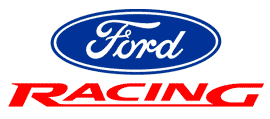

Auto Worker Site Owned by Paul Bussell
UAW Local 1999 Oklahoma City [Previous ] [Next] [Next 5 Sites] [Random Sites] [List Sites]

Last updated on 10 / 14 / 2001 at 10:20 a.m.
The war had started in 1961 over the Super / Stock ranks of the drag strips of America. Everybody was getting into the act. GM had Chevrolet with the "409". Pontiac had just joined with the "Super Duty" 421's. Dodge and Plymouth were out there with the "Max Wedge" 413's and they were kicking butt and taking names.
When 1962 rolled around Ford was feeling a little fat, as in heavy. Very heavy compared to the Mopars. Mopars new "Big" car was about the same size as Ford's fairlane and Ford was giving up about 600 pounds to the Plymouths and Dodges. Pontiac had a Catalina that had to be seen to be believed. They drilled holes in every thing that you could drill. The nick name "Swiss Cheese" has stuck to this day.
The Galaxies were weighting in at almost two tons and suffering from over weight. They simply could not keep up with the Dodges and the Plymouths, not to mention the hole riddled Pontiacs. Then Chevrolet dropped their bomb on the Super / Stock world, the 409 horse power 409 was released in the now light weight Impalas. This just proved to be too much Ford.
The odds were not in Fords court and things didn't look very good for them. They had the heaviest race car on the track and were down on horse power too. The 406 horse power 406 just wasn't making it. All the other racers had at least 3 to 6 more horsepower and were packing a lot less weight.
To change the odds a bit more in favor of Ford, a mid year
contract was given to the Experimental Car Garage to construct 11
very special reduced weight Galaxies two door hard tops. These
special Galaxies were light in weight and became known simply as
"Light Weight Galaxies". They are called that to this
day. The Light Weights had a collection of light weight parts as
had never been used before. Fiberglass was used for the hoods,
fenders, inner splash panels, doors, and trunk lid. The bumpers
and their brackets were aluminum. The excess weight hunt that
Ford put these cars through brought them down to weigh in at
3,400 pounds. Ford was at last competitive again and had built a
true A /FX of them. A gentleman named Mike Gray built the first
ram air box using a Ford Tri-power air cleaner base and lid with
a aluminum center section. This held two air ducts that forced
air drawn from behind the grill area. It worked very good and in
racing that says it all! Mike Gray in turn showed it to Charlie
Gray of the Ford Motor company. The rest is so much history. Ford
improved it with a large cast aluminum box that took six inch
hoses that were attached to the backs of the hi-beam holes and
got the forced air from the there.

This is a '62 A/FX as it appeared.
Ford released the 405 horse power 406 engine on December the 15th in 1961. It carried Fords renowned "Tri Power" set up. Ford also built a single four barrel version that was rated at 385 horsepower at 5,800 rpm.
Ford saw fit to give the new race cars a few other special parts like, a three inch drive shaft, a rear end with four pinion gears and larger fuel lines.

A nice try at streamlining the squared off rear roof line with this quickie fix top. Built by Holman & Moody for Ford. But, NASCAR wasn't buying this one as production. Simply because it wasn't.
[Home] [1960] [1961] [1963] [1964] [1964 A/FX Falcon] [1965] [1969-70] [Rancheros] [Cobras] [Links] [Classified Ads]
e-mail ideas and suggestions directly: Click Here